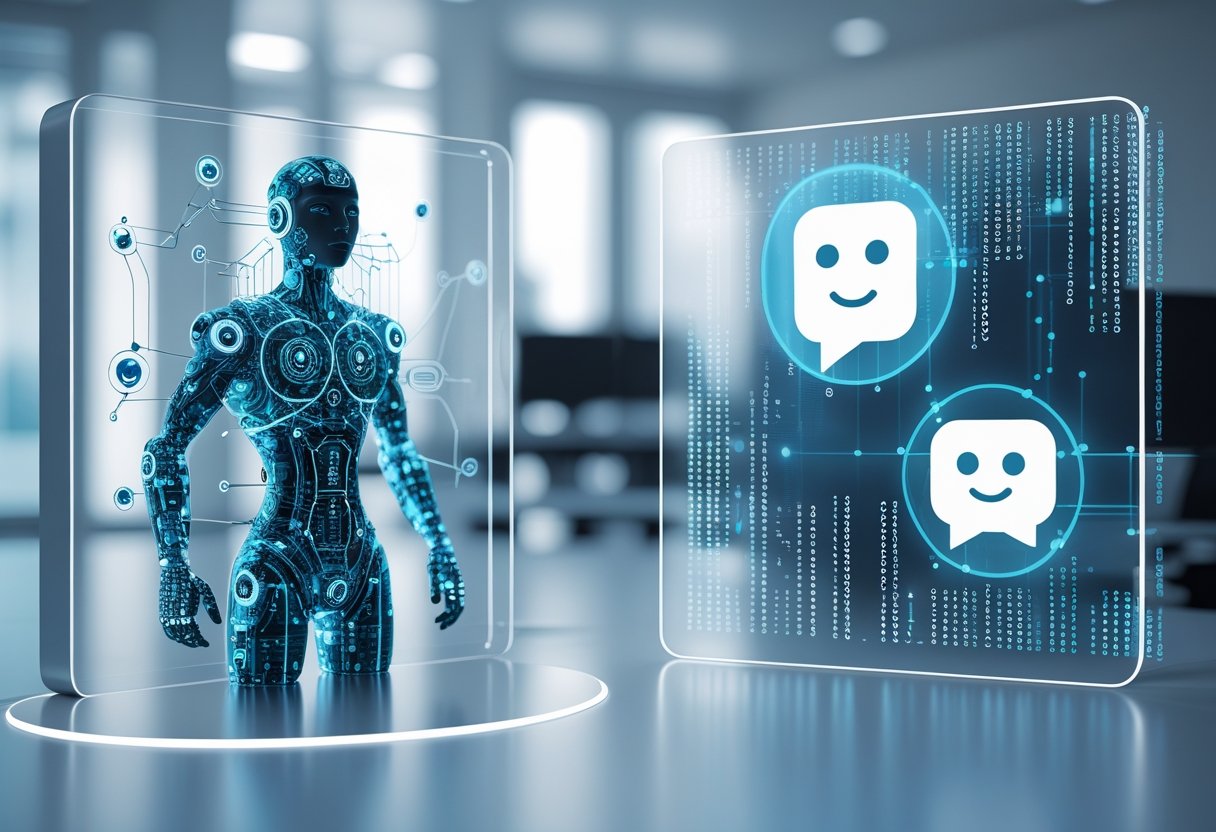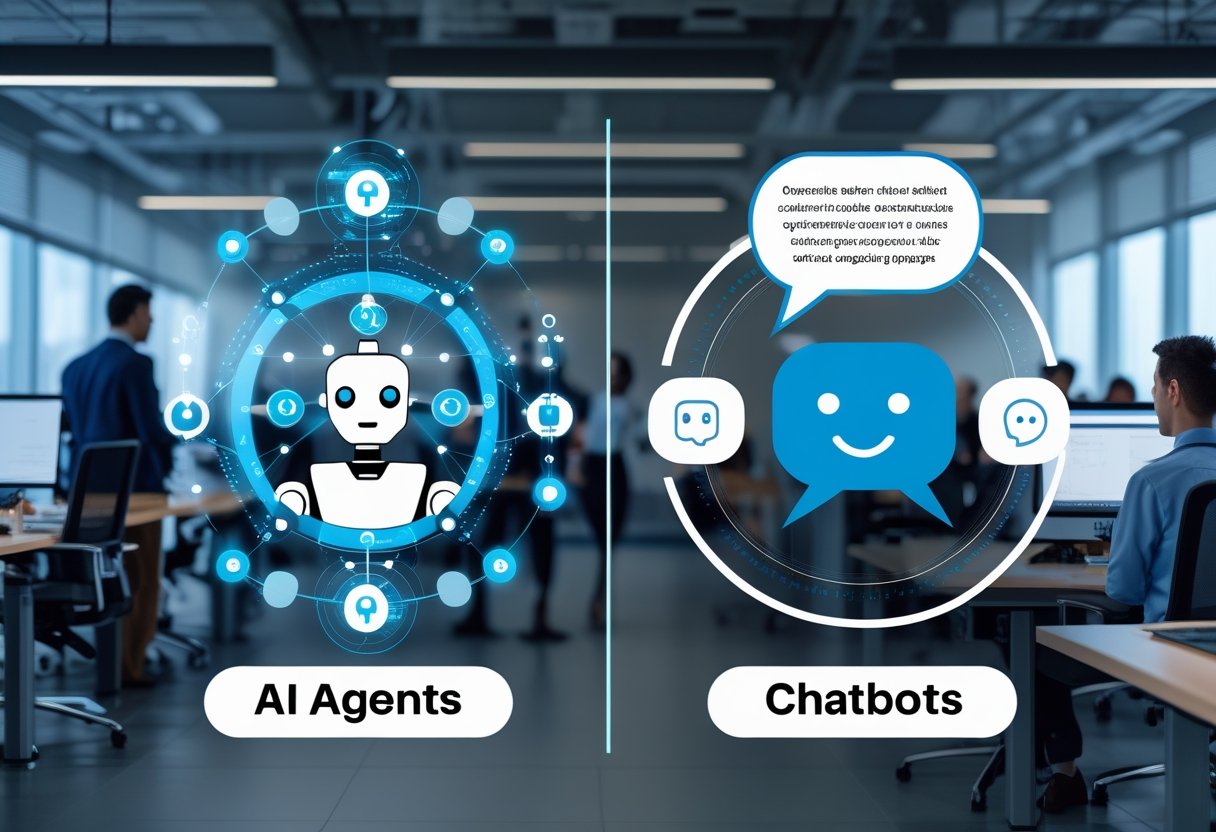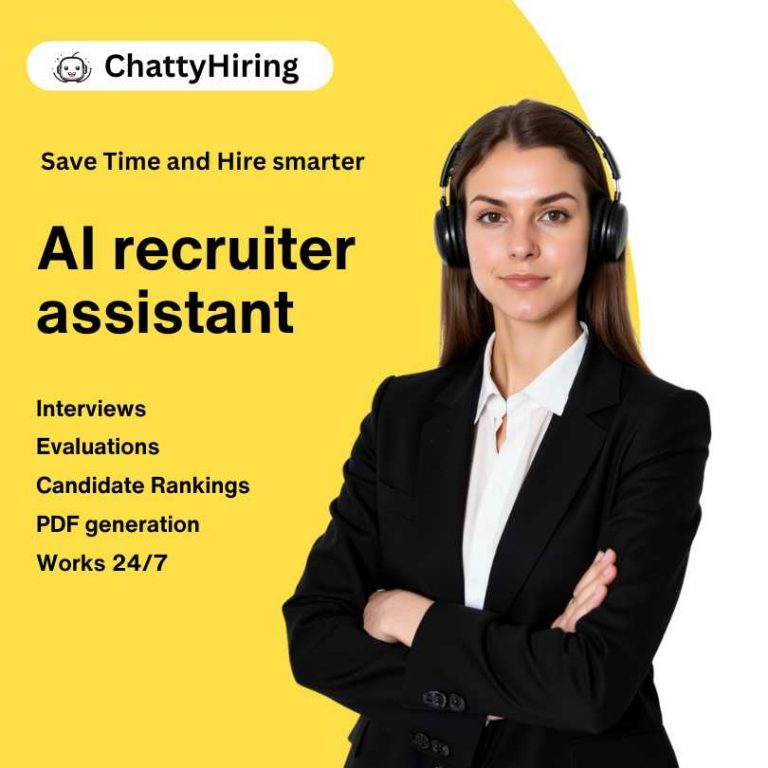AI agents and chatbots both use artificial intelligence to assist users, but they serve different purposes and operate at distinct levels of complexity. Chatbots are designed primarily for conversational support, answering questions and guiding users through simple tasks, while AI agents can perform complex, multi-step actions autonomously. Understanding this difference is key to choosing the right technology for a specific business need.

While chatbots excel at handling straightforward inquiries and providing quick access to information, AI agents can engage in more dynamic interactions by integrating with external systems to complete tasks. For example, an AI agent can manage hotel rebookings or adjust orders automatically, something chatbots typically cannot do without human intervention.
Businesses looking to improve customer experience and operational efficiency must evaluate how each option fits their goals. Exploring how AI agents differ from chatbots reveals how technology is evolving beyond basic conversation towards intelligent task management, making automation more effective and adaptive. For more detail, see AI agents vs. chatbots explained.
Core Differences Between AI Agents and Chatbots

AI agents and chatbots are both designed to handle digital interactions, but they differ significantly in complexity, intelligence, and flexibility. Their distinctions lie in how they interpret information, make decisions, and improve over time, impacting user experience and the range of tasks they can perform.
Fundamental Capabilities and Scope
Chatbots primarily focus on simulating conversation using natural language processing (NLP) to respond to user inputs within a narrow, predefined domain. They excel at handling routine inquiries like customer FAQs or simple task automation but have limited understanding beyond their programmed scope. Their responses are usually based on set patterns or specific datasets.
In contrast, AI agents leverage advanced artificial intelligence techniques such as deep learning, natural language understanding (NLU), and large language models. This allows them to handle broader and more complex tasks across multiple domains. AI agents can analyze data from various sources and synthesize information to perform multi-step processes. Their scope extends beyond conversation, often integrating with other systems for more intelligent automation.
Autonomy and Decision-Making
Chatbots operate mostly under rigid rules or scripts, responding to explicit commands without autonomous decision-making. They cannot initiate actions beyond their programmed responses or adapt their behavior independently during interactions. This limits their effectiveness to straightforward, transactional exchanges.
AI agents exhibit a higher degree of autonomy. They can interpret ambiguous instructions, make decisions, and plan sequences of actions without constant human guidance. By applying machine learning and reinforcement learning, AI agents dynamically adjust to new scenarios and execute complex workflows. This autonomous decision-making capability enables them to tackle real-time problems, such as optimizing supply chains or managing multi-platform tasks.
Continuous Learning and Adaptability
Traditional chatbots tend to have static learning models and require manual updates to expand their knowledge or improve performance. While some use machine learning for incremental improvements, their adaptability is generally limited to specific domains and datasets.
AI agents utilize continuous learning frameworks, including reinforcement and transfer learning, to evolve with every interaction. They can generalize from past experience, recognize new patterns, and incorporate feedback to enhance future responses. This adaptability allows AI agents to maintain relevance in changing environments and handle previously unseen challenges across diverse applications.
Practical Applications and Impact of AI Agents and Chatbots

AI agents and chatbots each enhance business operations by automating tasks and improving user interactions, but they do so with varying scopes and complexities. Their applications range from handling simple inquiries to managing complex, multi-step processes with data-driven decision-making.
Customer Support and Engagement
AI chatbots primarily handle customer support through instant, 24/7 interaction. They manage routine inquiries such as order tracking, FAQs, and appointment scheduling, reducing wait times and freeing human agents for complex issues. Chatbots improve customer experience by offering personalized responses based on user data and conversation context.
AI agents elevate support with greater autonomy and decision-making. They can escalate issues, trigger backend workflows, and proactively engage customers, which deepens engagement and satisfaction. Virtual assistants like Siri and Alexa are examples that combine conversational ability with task execution, demonstrating the AI agent use cases expanding beyond traditional chatbots.
Workflow Automation and Multi-Step Workflows
AI agents excel in orchestrating multi-step workflows across systems. They autonomously gather data, assess conditions, and execute sequential tasks without human input. For example, in insurance claims processing, an AI agent can collect documents, verify information, approve claims, and notify customers efficiently.
In contrast, AI chatbots usually automate individual tasks or respond within a limited conversation scope. Their automation targets simpler transactional activities but increasingly integrate with back-end systems to support broader workflows. Both tools contribute to operational efficiency by reducing manual intervention and accelerating response times.
Industry-Specific Use Cases
In healthcare, AI agents assist with diagnostics and patient monitoring, offering personalized treatment recommendations while ensuring compliance. AI-powered automation here reduces costs and errors.
Finance industries employ AI agents for fraud detection and automated trading, quickly analyzing complex data patterns for real-time decisions.
Manufacturing uses AI agents to optimize production, while autonomous vehicles rely on AI agents for navigation and safety decisions.
Chatbots serve education by providing tailored learning support and customer service in retail for instant assistance. Their adaptability makes them versatile for various sectors seeking to improve customer engagement and streamline operations.
For a detailed comparison of AI implementations, see AI agents and chatbots practical applications.
-

A passionate advocate for the future of HR innovation. With expertise in leveraging AI to revolutionize recruitment processes, Carlos has a clear vision: empower HR teams while creating meaningful candidate experiences.
View all posts





